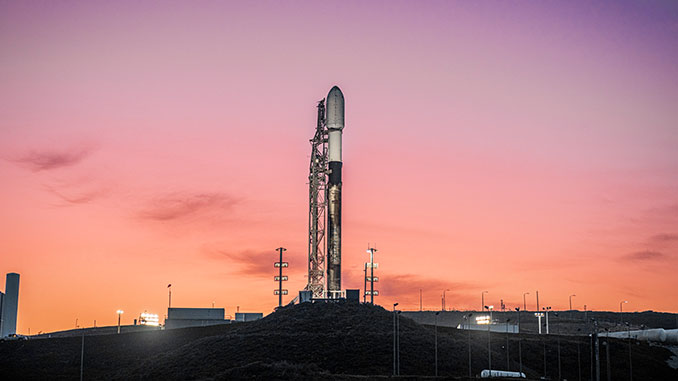Introduction:
In the realm of space exploration, the SpaceX Falcon 9 rocket stands as a symbol of innovation, ambition, and technological prowess. Developed by SpaceX, the aerospace company founded by Elon Musk, the Falcon 9 has redefined the possibilities of space travel, making access to space more affordable, reliable, and sustainable than ever before. In this comprehensive article, we will delve into the history, design, capabilities, and significance of the SpaceX Falcon 9 rocket, exploring its role in shaping the future of space exploration and colonization.
History and Development:
The Falcon 9 rocket traces its origins back to the founding of SpaceX in 2002 by entrepreneur and visionary Elon Musk. Frustrated by the high cost and limited accessibility of space travel, Musk set out to revolutionize the aerospace industry by developing affordable and reusable launch vehicles. The Falcon 9, named after the Millennium Falcon from Star Wars and its nine Merlin engines, was designed from the ground up with reusability and cost-effectiveness in mind.
The first successful launch of the Falcon 9 occurred on June 4, 2010, when it delivered the Dragon spacecraft into orbit as part of NASA’s Commercial Orbital Transportation Services (COTS) program. Since then, the Falcon 9 has become the workhorse of SpaceX’s launch fleet, conducting numerous missions for both commercial and government customers, including satellite deployments, cargo resupply missions to the International Space Station (ISS), and crewed flights.
Design and Specifications:
The Falcon 9 rocket features a two-stage design, with a reusable first stage and an expendable second stage. The first stage is powered by nine Merlin engines, which use liquid oxygen (LOX) and rocket-grade kerosene (RP-1) as propellants. These engines provide the Falcon 9 with impressive thrust and efficiency, enabling it to deliver payloads to a variety of orbits with precision and reliability.
One of the most revolutionary aspects of the Falcon 9 is its reusability. After completing its primary mission, the first stage of the Falcon 9 can return to Earth and land vertically on a drone ship stationed in the ocean or on a landing pad near the launch site. This capability significantly reduces the cost of space launches by allowing SpaceX to refurbish and reuse the first stage for future missions, rather than discarding it after a single use.
The second stage of the Falcon 9 is powered by a single Merlin Vacuum (MVac) engine optimized for operation in the vacuum of space. This engine provides the necessary thrust to propel payloads into their desired orbits and perform orbital maneuvers, such as satellite deployment or rendezvous with the ISS.
Capabilities and Achievements:
The Falcon 9 rocket has demonstrated remarkable versatility and reliability, with a track record of success that has solidified its position as a leading launch vehicle in the aerospace industry. Some of its notable capabilities and achievements include:
- Satellite Deployments: The Falcon 9 has successfully deployed hundreds of satellites into a wide range of orbits for commercial, government, and scientific customers around the world. Its ability to deliver payloads to precise orbits with high accuracy has made it the preferred choice for satellite launches.
- Cargo Resupply Missions: The Falcon 9 has played a crucial role in resupplying the International Space Station (ISS) as part of NASA’s Commercial Resupply Services (CRS) program. SpaceX regularly launches Dragon spacecraft filled with cargo and supplies to support the crew onboard the ISS.
- Crewed Flights: In 2020, the Falcon 9 made history by launching NASA astronauts to the ISS as part of the agency’s Commercial Crew Program. The Crew Dragon spacecraft, atop a Falcon 9 rocket, carried astronauts to orbit and safely docked with the ISS, marking the first crewed orbital flight launched from U.S. soil since the Space Shuttle program.
- Starlink Constellation: SpaceX has deployed a constellation of thousands of small satellites known as Starlink to provide global broadband internet coverage. The Falcon 9 has been instrumental in launching batches of Starlink satellites into orbit, with plans to expand the constellation further in the coming years.
Significance and Future Prospects:
The SpaceX Falcon 9 rocket represents a paradigm shift in space exploration, offering a cost-effective, reliable, and reusable solution for accessing space. Its success has not only propelled SpaceX to the forefront of the aerospace industry but has also inspired a new era of innovation and competition in space launch technology.
Looking ahead, the Falcon 9 is poised to play a central role in SpaceX’s ambitious plans for the future, including:
- Mars Colonization: Elon Musk has outlined plans to use the Falcon 9, along with its larger counterpart, the Falcon Heavy, to support missions to Mars and establish a permanent human presence on the Red Planet. The Falcon 9 will serve as the workhorse for launching spacecraft, supplies, and eventually crew to Mars.
- Lunar Exploration: SpaceX has been awarded contracts by NASA to use the Falcon 9 to deliver payloads to the Moon as part of the agency’s Artemis program. These missions will support the development of lunar landers, infrastructure, and technology to enable sustained human presence on the Moon.
- Beyond Earth Orbit: The Falcon 9’s versatility and reliability make it well-suited for a wide range of missions beyond Earth orbit, including interplanetary missions, deep space exploration, and satellite servicing. Its reusable design and cost-effective operation open up new possibilities for exploring the cosmos.
Conclusion:
The SpaceX Falcon 9 rocket represents a transformative leap forward in space exploration, with its reusability, reliability, and versatility redefining the possibilities of space travel. From satellite deployments and cargo resupply missions to crewed flights and beyond, the Falcon 9 has demonstrated its capabilities across a wide range of applications, solidifying its position as a pioneering force in the aerospace industry. As SpaceX continues to push the boundaries of space exploration and colonization, the Falcon 9 will undoubtedly play a central role in shaping the future of humanity’s journey to the stars.
